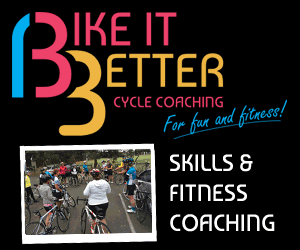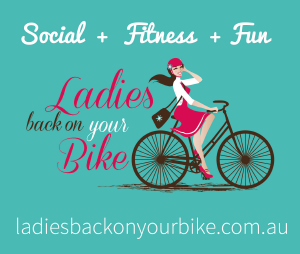The boom in riding has created rich pickings for bike thieves. Emma Clark investigates
 It’s a horrible feeling, seeing that empty space where you know you left your bike. Sickening disbelief followed by outrage is the normal reaction. But what are the chances of getting your beloved machine back? According to the police, the trade in stolen bikes in Australia is growing, but the recovery rate is disappointingly low; for example, of the approximately 4000 bikes reported missing in Victoria last year, only about 10% (400 bikes) were returned to their owners.
It’s a horrible feeling, seeing that empty space where you know you left your bike. Sickening disbelief followed by outrage is the normal reaction. But what are the chances of getting your beloved machine back? According to the police, the trade in stolen bikes in Australia is growing, but the recovery rate is disappointingly low; for example, of the approximately 4000 bikes reported missing in Victoria last year, only about 10% (400 bikes) were returned to their owners.
If the bike is simply lost, or taken for a joy ride then abandoned, it might be handed in to the local police. They will fill out a lost property report and the bike will be kept at the station for three months. During that time, they will match the description of the bike against their state-wide database of missing bikes. If a match is found, the owner is contacted and the bike is returned.
But bike owners often cannot give an accurate description of their missing bike, and no match is found. After three months with no success, the bike is offered to the person who first handed it in. If they don’t want the bike, it goes to auction.
Sergeant George Kazakoff, from the Melbourne West Police Property Office, has seen a lot of bikes come through his area. “Most of the bikes we receive come through as lost property, but we also occasionally seize them in raids of known thieves. Bikes can also be picked up under the proceeds of criminal act laws, where someone has bought a bike from the proceeds of a crime, such as selling drugs.
“These bikes are seized and when the person is charged, the bike become the property of the government and is then sold at auction.”
Police auctions
The fabled home of unclaimed bikes and other stolen/lost property, police auctions are held regularly all over Australia, with every capital city having at least one per month, and some states holding regional auctions. But don’t think you can reclaim your lost bike at one; once a bike reaches the auction stage, your rights as an owner have gone; you’ll have to bid for it, like everyone else.
Breen’s Auctions in Melbourne auctions all the bikes found and handed in to the Victorian police, with proceeds going to the State Government. Breen’s collects the bikes from police stations across the state and includes them in auctions every two to three weeks, with up to fifty bikes for sale at each event.
Founder Kevin Breen says, “We get all sorts of bikes, from kid’s BMXs up to high-end racers. They usually go for much less than you would pay in a shop. Auctions are the lowest end of retail, so everything is cheaper.”
At a recent auction monitored by Ride On there were over 30 bikes up for grabs. A wide range of bikes were available, from Giant road bikes, Trek mountain bikes and generic BMXs. Most bidders were buying for resale, but the auction also attracts private buyers looking to grab a bargain.
More information about police auctions in your state can be found in the classifieds section of major newspapers. Otherwise, try the websites below.
New South Wales Combined Auctions
Queensland The Public Trustee’s Office
South Australia Evans Clarke Auctions
Victoria Breen’s Auctions
Western Australia Ross’s Auctions
Police auctions in Tasmania, the ACT and the Northern Territory are often held by local police. Contact your local station for further information.
Where is my bike?
Most bikes are taken by opportunist thieves who see a chance to make some quick extra cash, or want a new bike themselves. But professional bike thieves do exist, and they will identify a bike they wish to steal ahead of time. Similar to car thieves, these professionals will case out the bike, ascertain the type of lock used, and prepare ahead for the theft.
Bikes are often sold on as is, can also be stripped down, repainted and sold, and sold for parts. Popular ways of disposing of bikes include eBay, the Trading Post and pawnshops. Some are also taken interstate and sold at second-hand markets or swap meets, and most tend to be moved on quickly.
Mark Johnson, from Melbourne bike store Bicycle Recycle, says it is difficult for a stolen bike to end up at a second-hand bike shop. “We have a second-hand dealer licence, which means when someone brings in a bike we want to sell, we take all the details of both the bike and the person who brought it in. We then have to hold the bike without selling it for seven days.
“The police regularly check our register of second-hand bikes. If someone does come in and see a bike they think is theirs, they have a right of recourse, which means they can get a court order and the police will investigate the legitimacy of their claim. We cannot sell the bike during this process.”
Lock thieves out

Bikes are taken in the street, railway stations and bike events, but more than half of all bikes reported missing are stolen from around the home. When at home, lock your bike to something permanent; professional thieves will think nothing of pulling down a fence or removing a door handle to get to your bike. Consider talking to Bike Parking Experts for a secure rack for your home. And when riding around town, lock the bike somewhere visible. Thieves don’t like an audience.
According to a Bicycle Victoria member survey, 75% of people who have experienced bike theft say their bike was locked at the time. Experts have found it takes an average of seven seconds to steal a locked bike, depending on the kind of lock used.
Thieves will use hammers, hacksaws, bolt cutters and even portable angle grinders to cut through locks. The longer it takes a thief to get through your bike security, the less likely it is your bike will be stolen. D-locks are the strongest; in its most recent lock test, Ride On recommended the Kryptonite Evolution Series 4 and the Abus Varedo 47, both heavy-duty D locks. And always remember to take any bike accessories with you when you leave the bike, such as pumps, lights, computers and bags.
Accurate description
Increase the chances of recovering a stolen bike by recording every possible identifying feature while it is still in your possession – make, model, colour, tyres, etc. Most bikes have a unique identification number, which is usually stamped on the frame beneath the bottom bracket (between the pedals). Note this number down. It can also be helpful to store a photo of the bike.
If you don’t have this information and the bike has been stolen, call the shop where you originally purchased it. They generally keep track of the serial numbers and might still have the bike’s details.
Investigate your options for registering your bike’s details online. For instance, Bicycle Victoria members can register their bike details, including a description and photo, online. Also consider engraving your bike with an identification number, such as your car licence number or your birth date. An engraving provides a personalised method of identifying a lost or stolen bike.
Some police stations will engrave your bike free of charge – ask your local station. Community events such as Ride to Work Day can also provide engraving. Otherwise, an engraving tool can be hired quite cheaply from hardware stores.
Insurance
Check your home and contents insurance to see if it covers bike theft; if not, sometimes cover can be added through the payment of a small premium. Bicycle Victoria and Bicycle Western Australia members have access to CycleSafe Home insurance, covering accidental or malicious loss or damage to your bike and home contents.
Ride On content is editorially independent, but is supported financially by members of Bicycle Network. If you enjoy our articles and want to support the future publication of high-quality content, please consider helping out by becoming a member.


